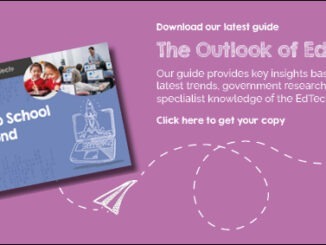
Mark Anderson shares four programs that will help you create effective learning resources
CREDIT: This is an edited version of an article that originally appeared on ICTevangelist
Resources are the cornerstone of every classroom, whether you make them yourself or not. The thing is, with literally tens of thousands of tools to choose from, what should you use? What tools would I choose to use?
In this post I aim to share four tools that, whilst not particularly ground-breaking, can be used regularly, if they sit within your ecosystem, or for free as part of your teaching and learning with technology toolkit. They can cover all manner of resource-making such as those outlined below and far more besides. In their own way, they all support strong digital citizenship – from pulling creative commons free images, icons and other resources, to promoting the creation of your own or your learners’ own demonstrations of learning.
They also integrate, and play well with, lots of other platforms; so, for example, the videos you can make as part of Adobe Creative Cloud Express embed directly into OneNote, or you can integrate Canva directly into Teams. There’s so much to like with these well-established tools; I know many sing their praises already.
My key point is this; for the vast majority of the time, if you can successfully ensure consistency of tools, and their use across all colleagues – ensuring all have the knowledge of what one can do, alongside having the knowledge of how, and confidence, to use them – you’ll make more significant progress than if you have small pockets of success within your school.
Adobe Creative Cloud Express
A tool that has long been a staple of my classroom – and, as a result, often shared in my workshops, training and blogs – has been Adobe Creative Cloud Express. Recently having changed its name from Adobe Spark, Adobe Creative Cloud Express has three main types of resource that you can create within it:
- Graphics: with thousands of templates for multiple purposes.
- Videos: think of this feature as being a bit like a presentation, but you record your voice on every slide.
- Web pages: think of these as being a bit like Microsoft Sway.
Slides and PowerPoint
It’s highly likely you’ll have access to one of these two slide-driven tools in your school set-up – and, with so many teachers and educators using these tools already, try thinking about how you could utilise some of the great templates or icon sets that come with them. In Google Slides, just use the built-in Google Image search to find a world of high-quality images and icons to add to your slides! These tools come packed with templates to get you started, icon packs, easy insertion of images and lots more.
Keynote
Whether you’re a Mac user or have an iPad, Keynote has been a staple of my own resource creation for a very long time. Its ease of use and advanced functionality make it a fantastic tool to help you create fantastic resources simply, quickly and easily.
It has lots of icons you can include which can help you to create better resources and great little features such as the ‘snap’ tool which enables you to line up different elements on the slides. It has helpful features too, such as Instant Alpha which powerfully removes backgrounds on images – something you often only usually find on advanced graphics images. You’ll tell me that you can remove backgrounds in PowerPoint, and sure, you can, but the Instant Alpha tool works so much more successfully.
Canva for education
You can make presentations using this tool and, in common with some of the other tools mentioned here, there are templates you can choose to use too.
I can see why so many teachers love using Canva, and whilst, personally, it isn’t one of my ‘go-to’ tools, it would be remiss of me not to share it as a helpful tool for educators in making resources a quicker and easier thing to do.
After all, it’s better to have more strings to your bow than too few.


Be the first to comment